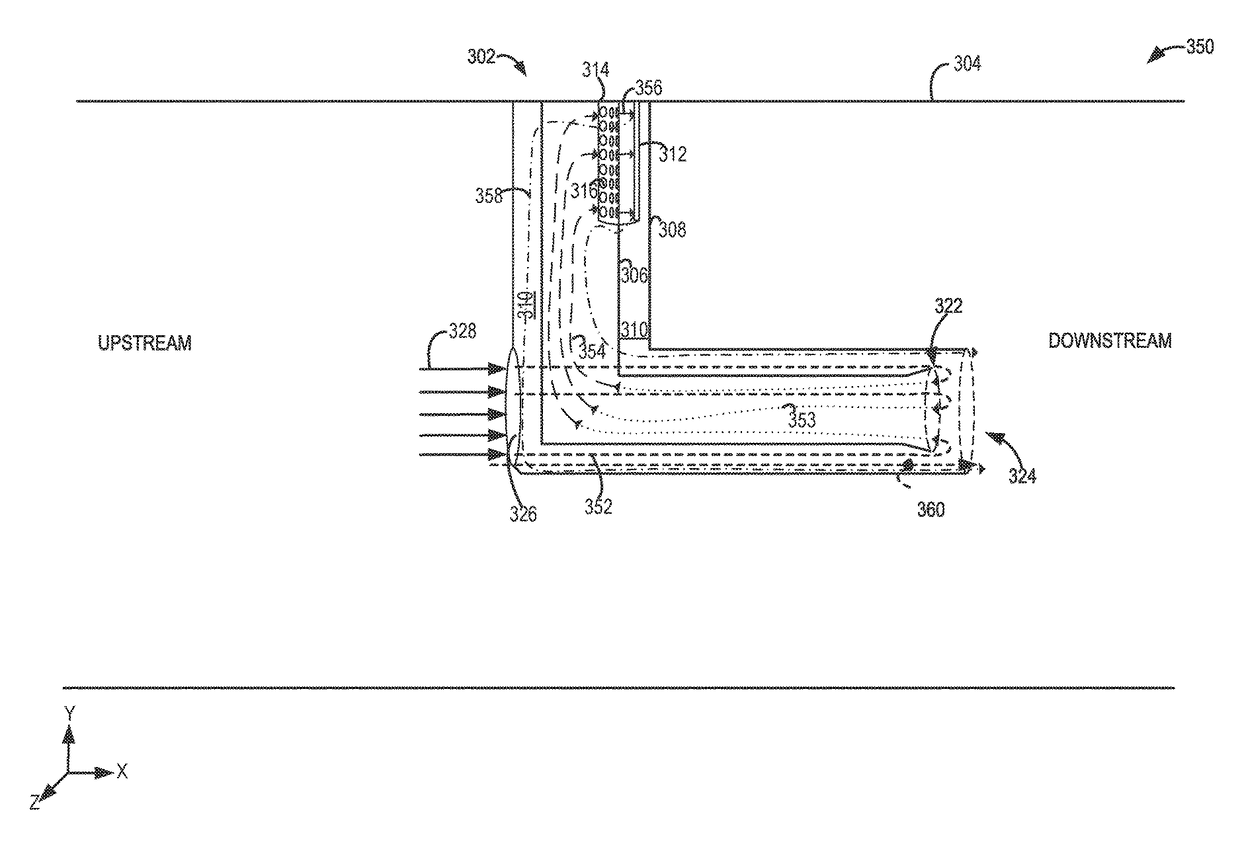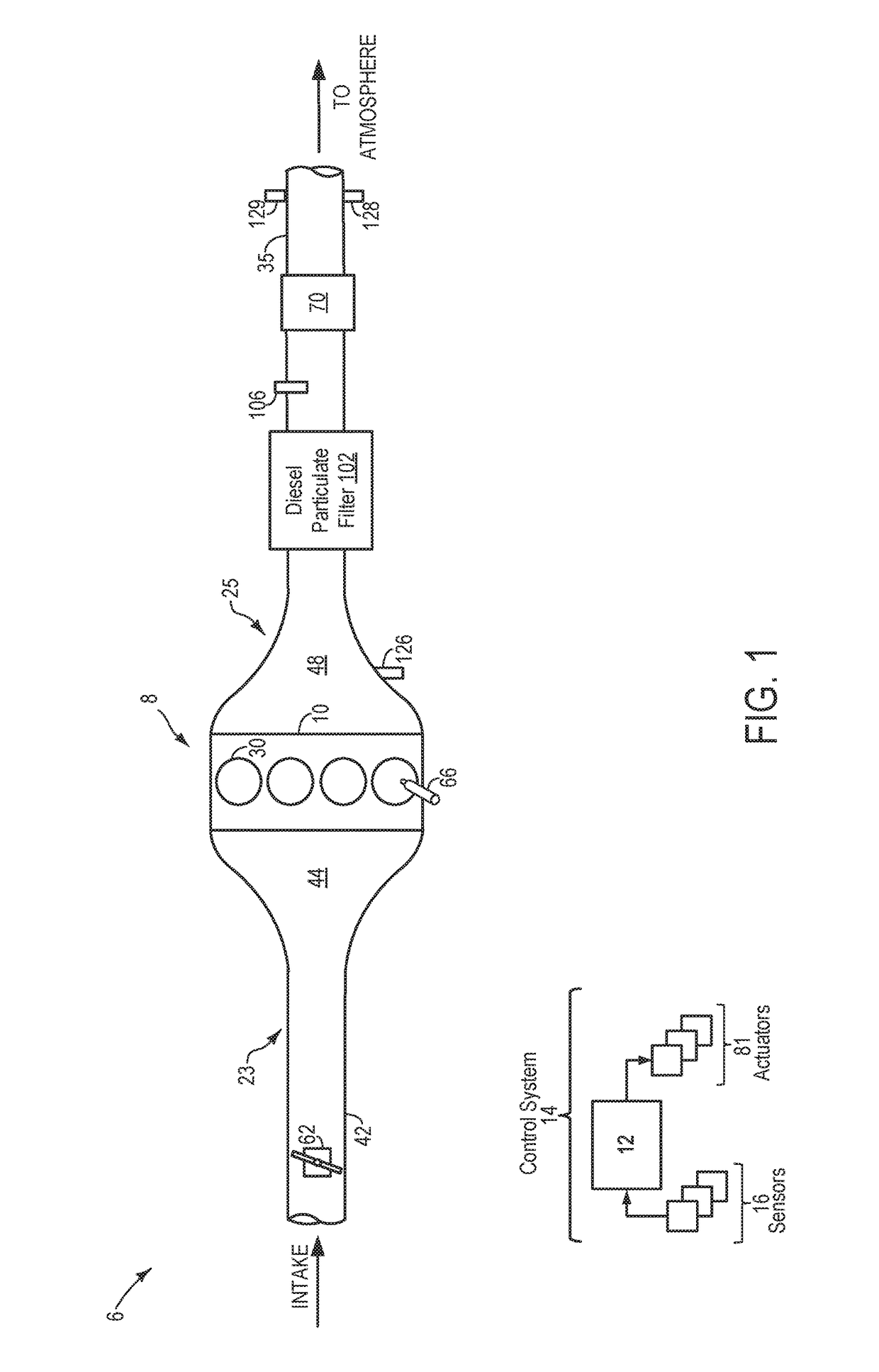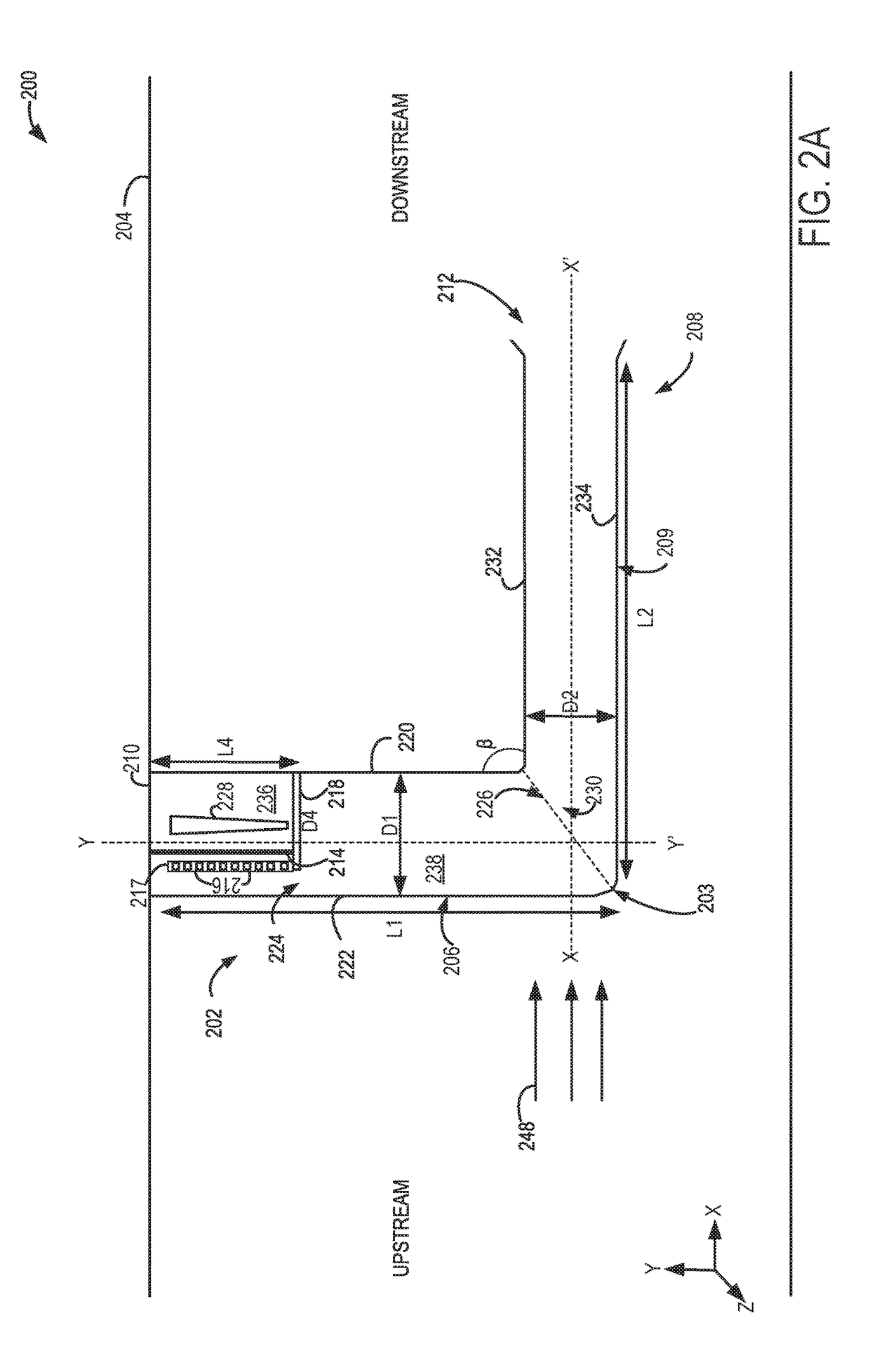Method and system for exhaust particulate matter sensing
a technology of particulate matter and sensing method, which is applied in the direction of exhaust treatment electric control, machines/engines, instruments, etc., can solve the problems of not being able to reliably measure the quantity of pm passing through the dpf, the sensor may be prone to contamination, and the flow rate of exhaust gas entering the sensor may be reduced, so as to reduce the sensitivity of the pm sensor, the effect of increasing the exhaust flow
- Summary
- Abstract
- Description
- Claims
- Application Information
AI Technical Summary
Benefits of technology
Problems solved by technology
Method used
Image
Examples
Embodiment Construction
[0023]The following description relates to systems and methods for sensing particulate matter (PM) in an exhaust flow of an engine system, such as the engine system shown in FIG. 1. A first example PM sensor assembly shown in FIG. 2A may be coupled to an exhaust passage of the engine system. As such, the PM sensor assembly may include an L-shaped bent protection tube coupled to the exhaust passage via a first, closed end. In addition, the bent tube may include a second outwardly flared up (FIG. 2C) end placed within the exhaust passage. Herein, the second end may serve as an opening configured to direct exhaust from the exhaust passage into the PM sensor assembly (FIG. 2B). Specifically, the exhaust flows towards a sensor element through a plurality of perforations formed on a baffle. As such, the second end may include a venturi-like opening configured to increase exhaust flow at the opening of the PM sensor assembly. A second example PM sensor assembly may include the bent tube sh...
PUM
| Property | Measurement | Unit |
|---|---|---|
| angle | aaaaa | aaaaa |
| distance | aaaaa | aaaaa |
| L-shape | aaaaa | aaaaa |
Abstract
Description
Claims
Application Information
 Login to View More
Login to View More - R&D
- Intellectual Property
- Life Sciences
- Materials
- Tech Scout
- Unparalleled Data Quality
- Higher Quality Content
- 60% Fewer Hallucinations
Browse by: Latest US Patents, China's latest patents, Technical Efficacy Thesaurus, Application Domain, Technology Topic, Popular Technical Reports.
© 2025 PatSnap. All rights reserved.Legal|Privacy policy|Modern Slavery Act Transparency Statement|Sitemap|About US| Contact US: help@patsnap.com



